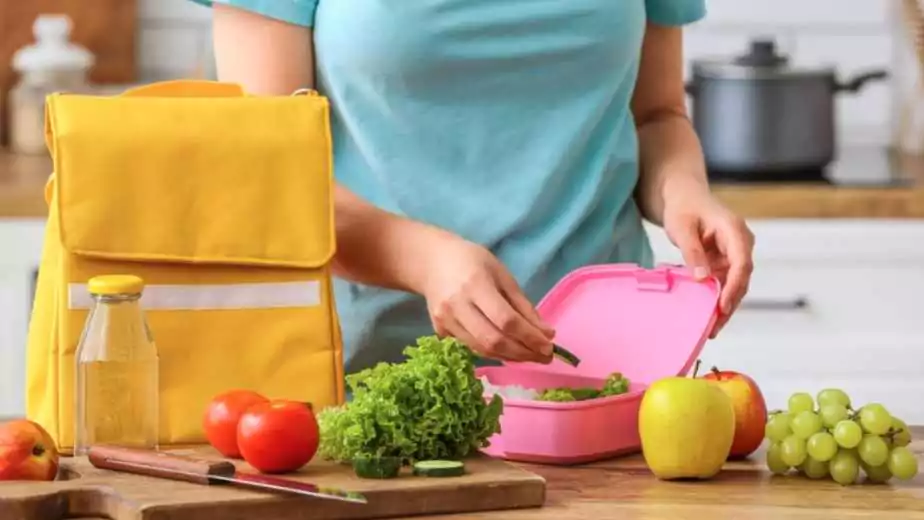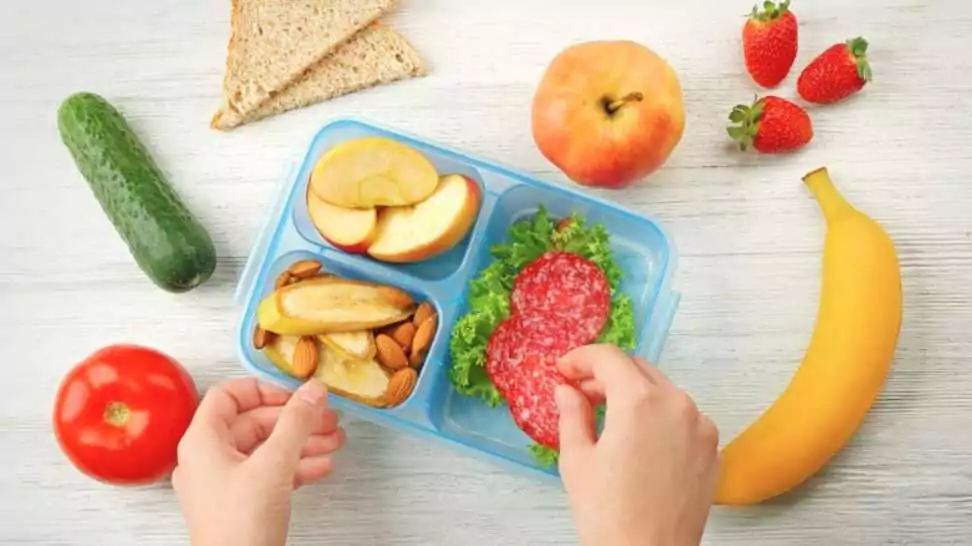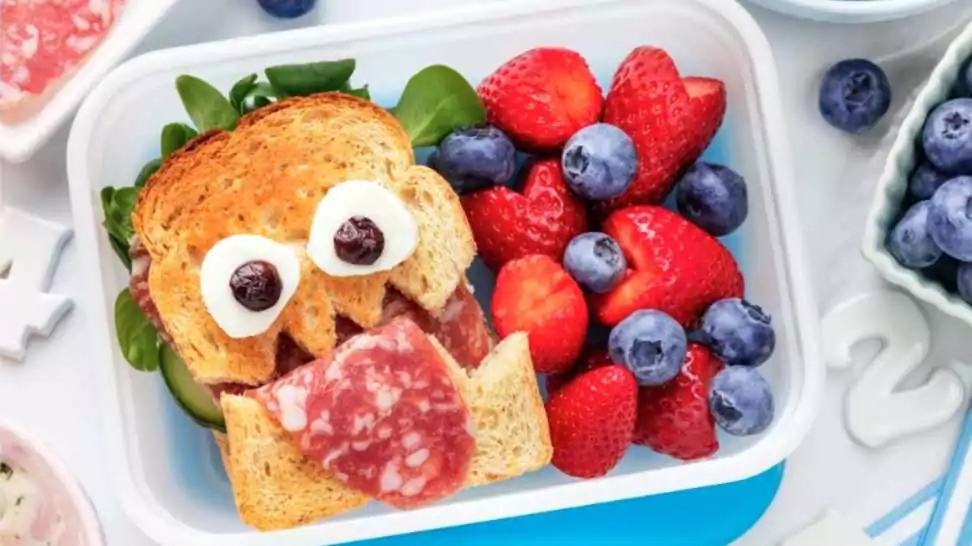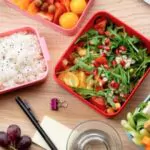How To Pack Lunch Box For Kids?

Every parent wants their child to be healthy and happy; a key component is their daily lunch. More than just a meal, a well-packed lunch box is essential for fuelling young minds and bodies, boosting energy, and improving focus for the day ahead. However, creating a nutritious and appealing lunch for kids, especially picky eaters, can be a real challenge. Balancing health with taste, managing time constraints, and ensuring variety beyond the usual sandwich and apple combo are common hurdles.
This blog will explore creative, nutritious solutions on how to pack lunch box for kids that cater to children’s tastes and parents’ peace of mind. Join us as we transform lunch packing from a daunting task into a fun and rewarding part of your daily routine.
1 Understanding Nutritional Needs For Babies
When it comes to packing a lunch box that supports the growth and development of your child, understanding their nutritional needs is key. A child’s lunch should be a harmonious balance of proteins, carbohydrates, fruits, vegetables, and dairy. Each of these components plays a vital role in their overall health and development.
Proteins: Often referred to as the building blocks of the body, proteins are crucial for the growth and repair of tissues. For kids, adequate protein intake is essential for their rapidly growing bodies. Good protein sources include lean meats, poultry, fish, eggs, nuts, and beans. Incorporating these into your child’s lunchbox ensures they have the necessary resources for muscle and tissue development.
Carbohydrates: Carbs are the primary source of energy for kids, crucial for fuelling their active and busy days. Whole grains, like whole wheat bread, brown rice, and quinoa, provide sustained energy and are packed with essential nutrients and fibre. Opting for whole grains over refined grains not only keeps your child energised but also supports healthy digestion.
Fruits and Vegetables: Fruits and veggies are nature’s vitamins, rich in essential nutrients, fibre, and antioxidants. They play a significant role in boosting the immune system, promoting good eye health, and preventing chronic diseases. Encouraging a variety of colours in their lunchbox not only makes the meal more visually appealing to children but also ensures a range of vitamins and minerals.
Dairy: Dairy products, or dairy alternatives fortified with calcium and vitamin D, are important for bone health. As children’s bones are growing rapidly, foods like milk, cheese, and yoghurt are vital for their development. They provide calcium, which is essential for strong bones and teeth, and vitamin D, which aids in calcium absorption.
A balanced diet for growing children also means moderation and variety. It’s not just about sticking to the essential food groups but also about varying the choices within these groups to provide a range of nutrients. This variety caters to the nutritional requirements and keeps lunchtime interesting and engaging for kids.

2 Planning and Preparation
Efficient and stress-free lunch packing starts with good planning and preparation. A little bit of foresight can go a long way in simplifying your mornings and ensuring your kids head off to school with a nutritious and exciting lunch. Here are some tips to streamline your lunch-packing process.
Weekly Meal Planning

One of the most effective strategies is to plan your child’s lunches every week. This doesn’t need to be a complex process. Simply jot down a basic outline of what you intend to pack each day of the week, ensuring a good mix of proteins, carbohydrates, fruits, vegetables, and dairy. This plan serves as your roadmap for grocery shopping, helping you buy exactly what you need, reducing waste, and saving money. It also eliminates the daily indecision about what to pack, making your mornings smoother.
Involving Kids in Planning
Getting your children involved in the meal planning process can be a game-changer. When kids have a say in what goes into their lunchbox, they’re more likely to eat it. Sit down with them once a week and discuss options, perhaps letting them pick their favourite fruit or decide between sandwiches or wraps for a particular day. This not only makes them feel valued and independent but also educates them about making healthy food choices.
Advance Preparation
To save time in the morning rush, prepare components of the lunch in advance. Dedicate some time over the weekend or a quiet evening to prep work. Wash and cut fruits and vegetables, cook and portion out proteins, or even assemble whole sandwiches or salads that can stay fresh in the fridge. Store these prepped items in clear, grab-and-go containers to make assembling lunches quick and easy.
Remember, the key is not to overcomplicate things. Simple, nutritious ingredients can be combined in creative ways to produce a variety of tasty and healthy options. With a bit of planning and preparation, you can turn the daily task of packing your child’s lunchbox into a hassle-free and enjoyable routine.
3 Creative and Fun Lunch Ideas

Packing a lunch box that is both nutritious and fun can seem challenging, especially when catering to picky eaters. However, with a little creativity and some playful presentation, you can transform a simple meal into an exciting culinary adventure for your kids. Here are a variety of lunch ideas that are not only healthy but also enjoyable to eat.
- Themed Bento Boxes: Bento boxes are a fantastic way to incorporate variety and fun into your child’s lunch. Use themes to make the lunch exciting – think of their favourite animals, characters, or even a colour theme. For example, a ‘jungle-themed’ bento box can include a sandwich cut in the shape of a lion, some ‘forest’ veggies like broccoli and celery, and a ‘tropical’ fruit salad.
- DIY Lunch Kits: Kids love to assemble their meals, so why not create a DIY lunch kit? For example, pack individual containers of taco fillings – grilled chicken, cheese, lettuce, and tortillas. This not only makes lunchtime fun but also allows kids to personalise their meals.
- Fun Shapes and Sizes: Use cookie cutters to make sandwiches, fruits, or cheese into fun shapes like stars, hearts, or their favourite characters. Smaller, bite-sized pieces are often more appealing to children and easier for them to eat.
- Colourful Veggies and Dips: Turn vegetables into a treat by serving them with tasty dips. Offer a rainbow of sliced veggies like carrots, bell peppers, and cucumbers with hummus or a yoghurt-based dip. The colourful presentation can make these healthy snacks more appealing.
- Wrap it Up: Wraps are a great alternative to traditional sandwiches and can be more enticing for picky eaters. Fill a whole grain tortilla with turkey, cheese, and lettuce, or try a vegetarian option with hummus and grated carrots.
- Breakfast for Lunch: Who says you can’t have breakfast foods for lunch? Pack a lunch box with yoghurt, granola, and berries, or a muffin paired with a hard-boiled egg and some fruit. These breakfast favourites can be a delightful surprise at lunch.
- Sweet Treats: Include a small, healthy sweet treat to make lunchtime extra special. Think homemade oatmeal cookies, a piece of dark chocolate, or a homemade muffin.
4 Packing Tips and Tricks
Ensuring that the food in your child’s lunchbox remains fresh, safe, and appealing until lunchtime requires some clever packing strategies. Here are several tips and tricks that will help keep lunchtime meals as enjoyable as when they were first prepared.
Keeping Food Fresh

Insulated Containers: For items that need to be kept warm, like soups or pasta, use insulated containers. These can keep food warm for several hours, ensuring a hot meal comes at lunchtime.
- Ice Packs: For cold items, ice packs are essential. Sandwiches, dairy products, and fresh fruits stay cool and fresh when packed with a small ice pack.
- Hydration: Don’t forget a water bottle. Keeping kids hydrated is as important as a nutritious meal. Opt for a reusable bottle that’s easy for your child to open and close.
Choosing the Right Lunchbox and Containers
- Compartmentalised Lunch Boxes: Bento-style boxes or those with multiple compartments help in organising different types of food and keeping them separate. This prevents flavours from mixing and can make the meal more visually appealing.
- Leak-proof Containers: To avoid spills, use leak-proof containers, especially for liquid items like dips or dressings. They also keep food fresh and prevent it from drying out.
- Size Matters: Choose containers that fit snugly into the lunchbox. This prevents the contents from shifting around and getting jumbled.
Ease of Use for Kids
- Easy-to-Open Containers: Ensure that all containers are easy for little hands to open. Before buying, test the containers to see if your child can open them without assistance.
- Organise for Accessibility: Pack the lunchbox in such a way that it’s easy for your child to access everything. For example, keep snacks on top for break time and the main meal underneath.
- Labelling: If your child’s school has a communal fridge, consider labelling their lunchbox and containers with their name. This helps in preventing mix-ups and lost items.
Few Additional Tips
- Prevent Sogginess: To keep sandwiches from getting soggy, place a dry lettuce leaf against each bread slice before adding wet ingredients like tomatoes or cucumbers.
- Keep It Neat: Pack a small napkin or paper towel to help with spills or to clean hands before and after eating.
- Utensils: Don’t forget to include any necessary utensils. Choose lightweight, reusable ones that fit easily into the lunchbox.
5 Allergies and Dietary Restrictions
Catering to children with allergies or dietary restrictions can add an extra layer of complexity to packing a school lunch. However, with a little creativity and knowledge, you can prepare meals that are not only safe but also delicious and nutritious. Here, we’ll address common dietary restrictions and offer suggestions for substitutions and alternative meal ideas.
Gluten-Free Needs
Children with gluten intolerance or celiac disease need to avoid wheat, barley, and rye.
- Substitutions: Opt for gluten-free bread for sandwiches, and use rice, quinoa, or gluten-free pasta for grain-based dishes.
- Meal Ideas: Try a quinoa salad with veggies, gluten-free wraps, or rice cakes topped with hummus and cucumber.
Lactose Intolerance
Lactose intolerance requires avoiding dairy products that contain lactose.
- Substitutions: Use lactose-free milk and dairy products. Almond, soy, or oat milk are great alternatives.
- Meal Ideas: Non-dairy yogurt with fruit and granola, or sandwiches with lactose-free cheese.
Nut Allergies
Nut allergies are common in children and can be severe. Avoiding all nut products is crucial in these cases.
- Substitutions: Instead of peanut butter, try sunflower seed butter or soy nut butter for sandwiches.
- Meal Ideas: Veggie sticks with a nut-free dip, or sunflower seed butter and jelly sandwiches.
Vegetarian or Vegan Diets
For children following a vegetarian or vegan diet, the focus is on plant-based foods.
- Substitutions: Use beans, lentils, tofu, or tempeh as protein sources.
- Meal Ideas: Chickpea salad sandwiches, vegetable sushi rolls, or pasta with a tomato and vegetable sauce.
Egg Allergies
Eggs are a common allergen and must be avoided in such cases.
Substitutions: For baking, use applesauce or mashed banana as a binder instead of eggs.
Meal Ideas: Avocado wraps, vegan pasta salads, or rice paper rolls with veggies.
Additional Tips
- Label Reading: Always read food labels to ensure that allergens are not present in packaged foods.
- Cross-Contamination: Be mindful of cross-contamination when preparing food. Use separate utensils and cutting boards for allergen-free cooking.
- Communication: Inform your child’s school and teachers about their dietary restrictions and ensure your child knows what they can and cannot eat.
6 Encouraging Healthy Eating Habits
Developing healthy eating habits in children is not just about packing the right foods in their lunchboxes; it’s also about encouraging a positive attitude towards food and eating. Here are some tips on how to motivate kids to try new foods and foster a lifelong healthy relationship with food.
- Introduce New Foods Gradually: Introducing new foods can be a slow process. Start by including small portions of new items alongside familiar favourites in the lunchbox. This reduces pressure on the child and makes new foods less intimidating.
- Involve Them in Food Selection: Take your children grocery shopping and let them pick out a new fruit or vegetable to try. Involvement in the selection process can pique their interest and make them more likely to try something new.
- Be a Role Model: Children often mimic their parents’ eating habits. Show enthusiasm for trying and enjoying a variety of foods yourself. A positive attitude towards food at home can translate into more adventurous eating at school.
- Encourage, Don’t Force: Pressuring kids to eat certain foods can create negative associations with eating. Instead, encourage them gently and celebrate small victories when they try something new.
- Make Food Fun: Presenting food in a fun and appealing way can make a big difference. Use cookie cutters for interesting sandwich shapes, create colourful fruit skewers, or make smiley faces with vegetables.
- Educate About Food: Teach your children about the benefits of different foods. For example, explain how carrots are good for their eyesight or how dairy helps build strong bones. Understanding the ‘why’ behind healthy eating can be motivating.
- Consistency is Key: Consistency in offering a variety of foods is important. Repeated exposure can gradually break down a child’s reluctance.
- Create a Positive Eating Environment: Make mealtime a stress-free and enjoyable time. Avoid using food as a reward or punishment, as this can lead to unhealthy eating habits.
7 Wrapping Up
Remember, packing a lunch box for your child doesn’t have to be a chore. It can be an enjoyable and creative process that not only their bodies but also their minds. Involve your kids in the process, experiment with new ideas, and keep it fun and engaging. Every lunch box packed with love and care is a step towards fostering healthy, happy eating habits in your children.
We’d love to hear from you! Share your lunch-packing tips and successes in the comments below. Your experiences could inspire and assist other parents in their quest to provide healthy, appealing, and eco-friendly lunches for their kids.
Community Q&A
About This Article
This article has been viewed 93 times.



